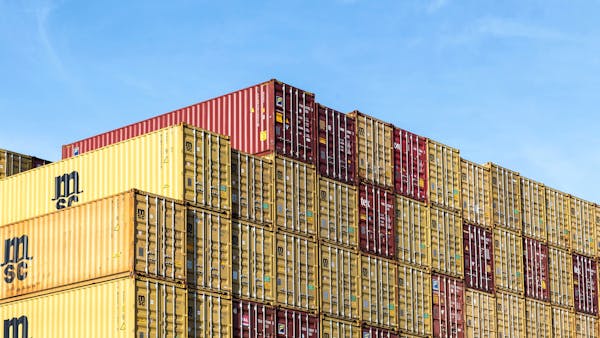Shipping Shoes from Guangzhou/Shenzhen to Horsens Port, Denmark via Sea Freight (FCL & LCL)
Shipping shoes from China to Denmark is a common and efficient logistics operation. The route from Guangzhou or Shenzhen to Horsens Port, Denmark, offers two main sea freight options: Full Container Load (FCL) and Less than Container Load (LCL). Both options cater to different shipment volumes and requirements, and understanding each method can help businesses choose the most suitable solution for their cargo.
1. Full Container Load (FCL) Shipping
FCL shipping is ideal for large shipments of shoes, as it allows for the entire container to be dedicated to a single shipment. Whether you choose a 20-foot container (20FT) or a 40-foot container (40FT), FCL offers the advantage of better cost efficiency for larger volumes and provides a more secure and faster transit option.
- Transit Time: The average sea transit time from Guangzhou or Shenzhen to Horsens Port is around 40 days. This can vary depending on factors such as weather conditions and port congestion, but it generally takes about 40 days for cargo to reach Denmark.
- Cost-Effective: Since the entire container is used by one shipper, FCL shipments typically offer a lower per-unit cost compared to LCL for larger volumes.
- Security and Integrity: With FCL, your cargo is not shared with other shipments, minimizing the risk of damage, misdelivery, or contamination.

3. CIF Shipping Terms
When shipping under CIF (Cost, Insurance, and Freight) terms, the seller is responsible for covering the cost of shipping, insurance, and freight up to the destination port, Horsens Port in this case. This is advantageous for the buyer, as it reduces the risk and financial responsibility for the buyer until the cargo arrives at the destination.
4. Packaging for Shoes
Proper packaging is crucial to ensure that shoes arrive in good condition at their destination. Packaging must be durable, protective, and efficient to optimize space in the container and avoid damage during transit.
- Shoebox Packaging: Shoes are typically packed in individual shoeboxes, with each box containing one pair of shoes. These boxes are usually made of cardboard, which provides adequate protection and stacking strength.
- Carton Boxes: Several shoeboxes are then consolidated into larger cartons for easier handling and transport. The cartons should be sturdy, double-walled, and appropriately sized to avoid shifting during transit.
- Plastic Wrapping: To protect shoes from moisture, dirt, and environmental elements during the journey, plastic wrapping is used. Shrink-wrapping individual boxes or entire cartons can help safeguard the goods.
- Palletizing: For larger volumes of shoes, the cartons may be stacked onto wooden pallets. This is especially important for LCL shipments, where multiple cartons need to be consolidated, as pallets make it easier to handle and manage the cargo.
- Labeling: Each package should be clearly labeled with necessary details like the destination port, consignee information, and handling instructions. This ensures that the shipment can be easily tracked and identified throughout the logistics process.



